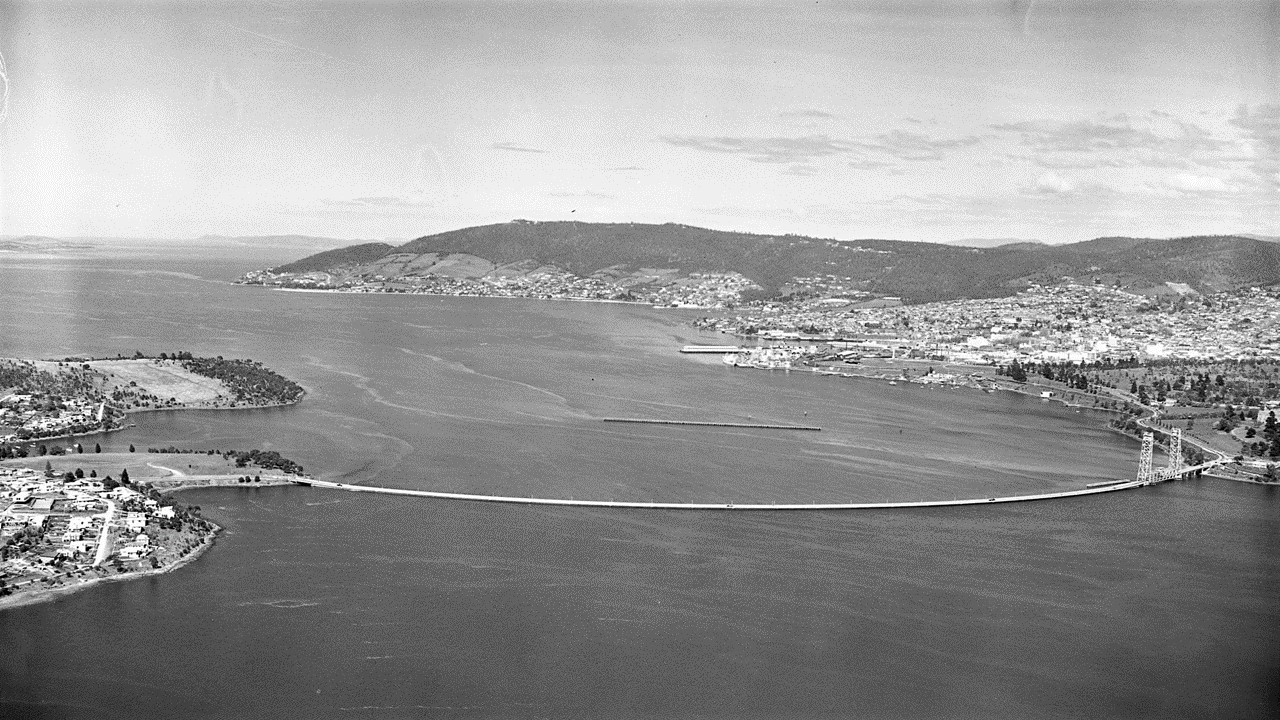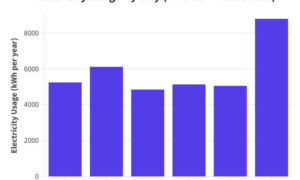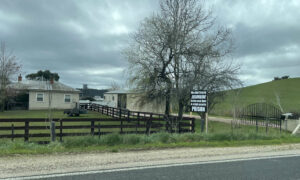The Hobart Bridge was a floating arch bridge that connected the eastern and western shores of Hobart between 1943 and 1964. It was an engineering marvel, and the first of its kind in Australia. It consisted of twenty-four hollow concrete pontoons, a lift span for ships to pass under, and an anchor. It was 961 metres long.
History
The Hobart Bridge was designed in 1936 by Sir Allan Knight, the chief engineer of the Public Works Department at the time.
It was built between 1938 and 1943 at a cost of £300,000 (£13,781,854 when adjusted for inflation).
On the day the bridge opened for traffic (22 December 1943), the Kalgoorlie Miner reported:
“Approximately 800 vehicles travelled over the new floating bridge which was opened for traffic at Hobart to-day.”
“In the afternoon, when the traffic was heavy, a downstream wind reached a maximum velocity of 40 miles an hour. It was the heaviest blow experienced from that, quarter since the bridge was affected by a recent storm. There was no movement whatever in the bridge and the traffic proceeded normally. Additional buses had to be used from the city to cope with the passengers travelling to the eastern shore by way of the bridge.”
A toll of two shillings (twenty cents) applied to vehicles crossing the bridge between 1943 and 1946. From 1946 to 1948, the toll was just one shilling (ten cents). Passengers over fourteen were charged three pence (three cents), and one shilling six pence (fifteen cents) was charged for utilities. The collection of tolls stopped at midnight on 31 December 1948.
The bridge became more and more congested as the population grew on the eastern side of the Derwent. Numerous storms had also battered it by 1955, severely reducing its lifespan. The decision to replace it with the Tasman Bridge was eventually made.
The Tasman Bridge was built between 1960 and 1964. It was opened to traffic on 17 August 1964. The floating arch of the Hobart Bridge was subsequently removed, stored at Geilston Bay, and later sunk. The lift span was demolished after several years.
Today
The east on-ramp, one of the lift span’s feet, and the locking pin are the only remnants of the Hobart Bridge that have survived to this day. Having said this, many Hobartians still remember it.
“I was in the Brownies when it was being built. We were taken over for a visit. All I can remember is looking inside the pontoons. They were huge, empty, and dark.” ― Vilma Carleen Baker
“I can remember visiting my great-grandparents via the Hobart Bridge. They’d close it when the Derwent was rough and the winds were strong, because it behaved like a ship. Also, when I was 11, I won a Tasmanian science award. Part of the award was a visit to the Tasman Bridge, which, at the time, was being built. I still have a fossil sample taken from the pylon drill!” ― Pamela Lincolne
“My grandfather, Cliff Millhouse, was a carpenter. He worked on dismantling the Hobart Bridge in 1964. One day during the work, a huge storm came up. My pop was thrown off the bridge with several others, and they clung to the sides. Though he survived, my pop had a breakdown afterwards and never worked again.” ― Lynnette Rhodes
Fast facts
- Length of roadway between shore abutments: 1.16 km.
- Cost: £300,000 (£13,781,854 when adjusted for inflation).
- Construction commenced: April 1938.
- Opened for traffic: 22 December 1943.
- Closed to traffic: 17 August 1964.
- Pontoons removed: 18 and 19 August 1964.
- Lift span opening: 55 metres between pier protections.
- Vertical clearance of lift span: 44.4 metres at mean water level.
- Weight of towers and lift span: approximately 900 tonnes.
- Weight of lift span only: 350 tonnes.
- Weight of steel in lift span towers: 280 tonnes.
- Weight of steel in lift span: 192 tonnes.
- Roadway width on lift span: 6.7 metres.
- Time it took to lift the opening span: 2 minutes.
- Lift span machinery: two 50 HP, 600 RPM electric motors. There were auxiliary motors in case of a power failure.
Photo gallery

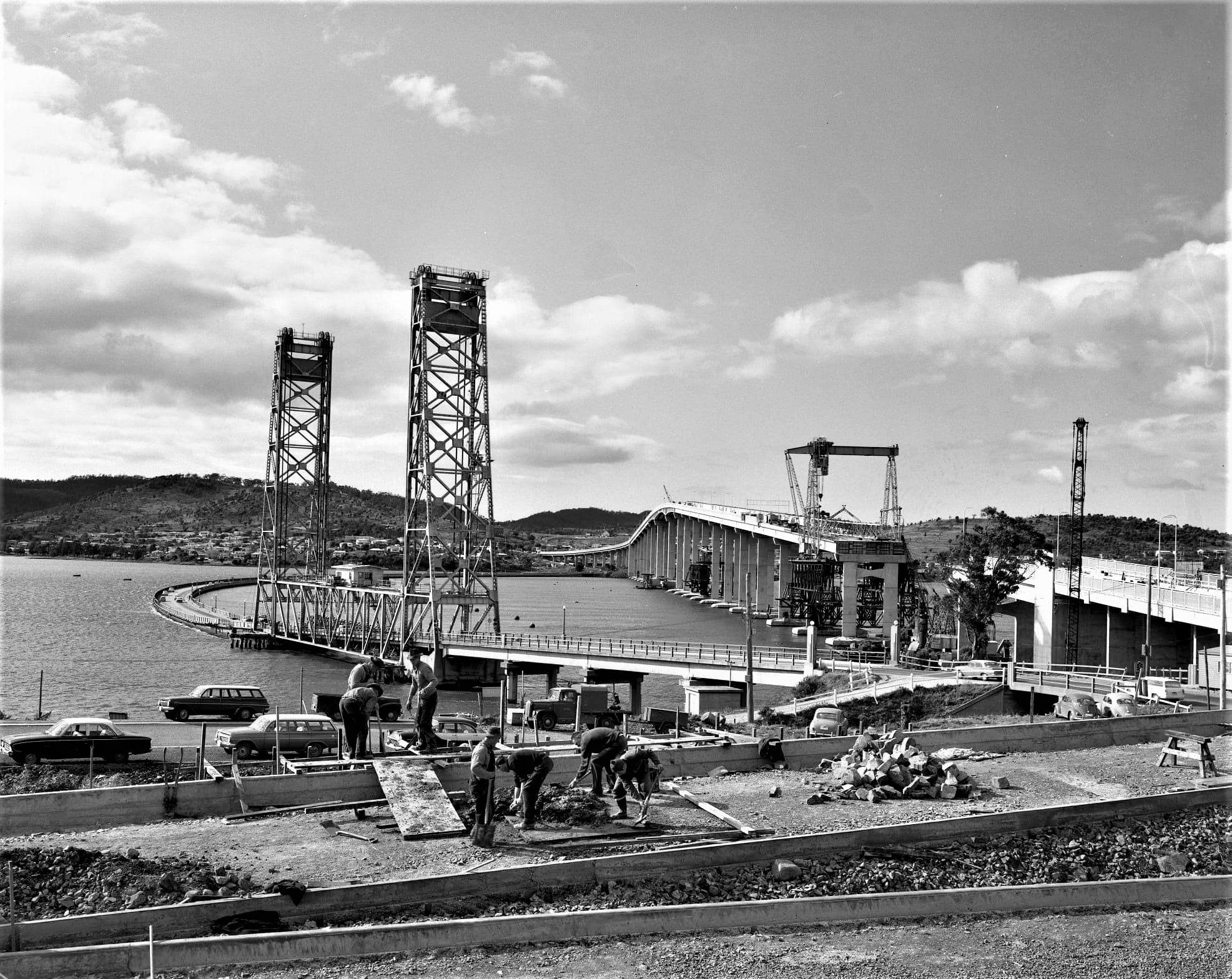
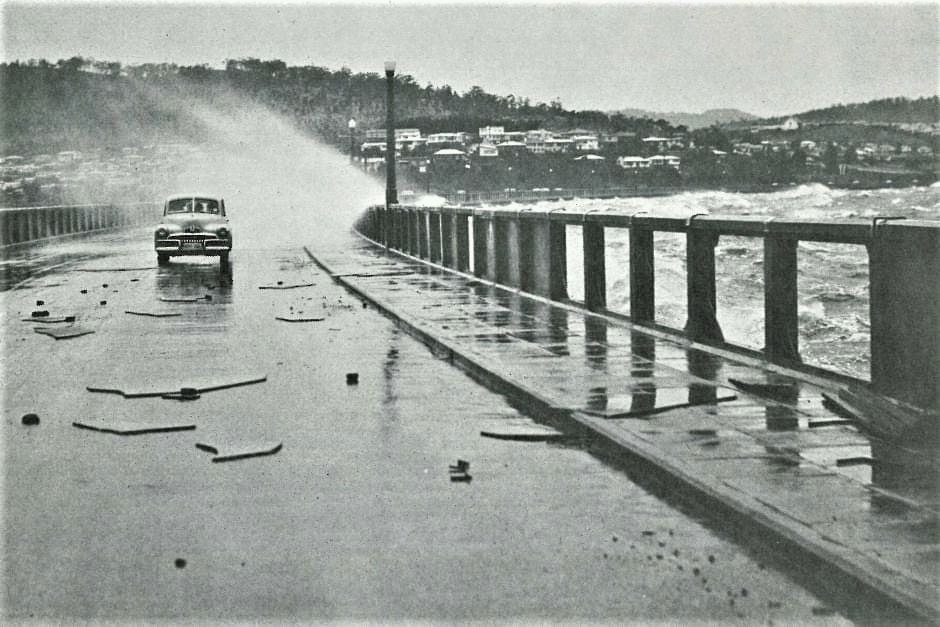
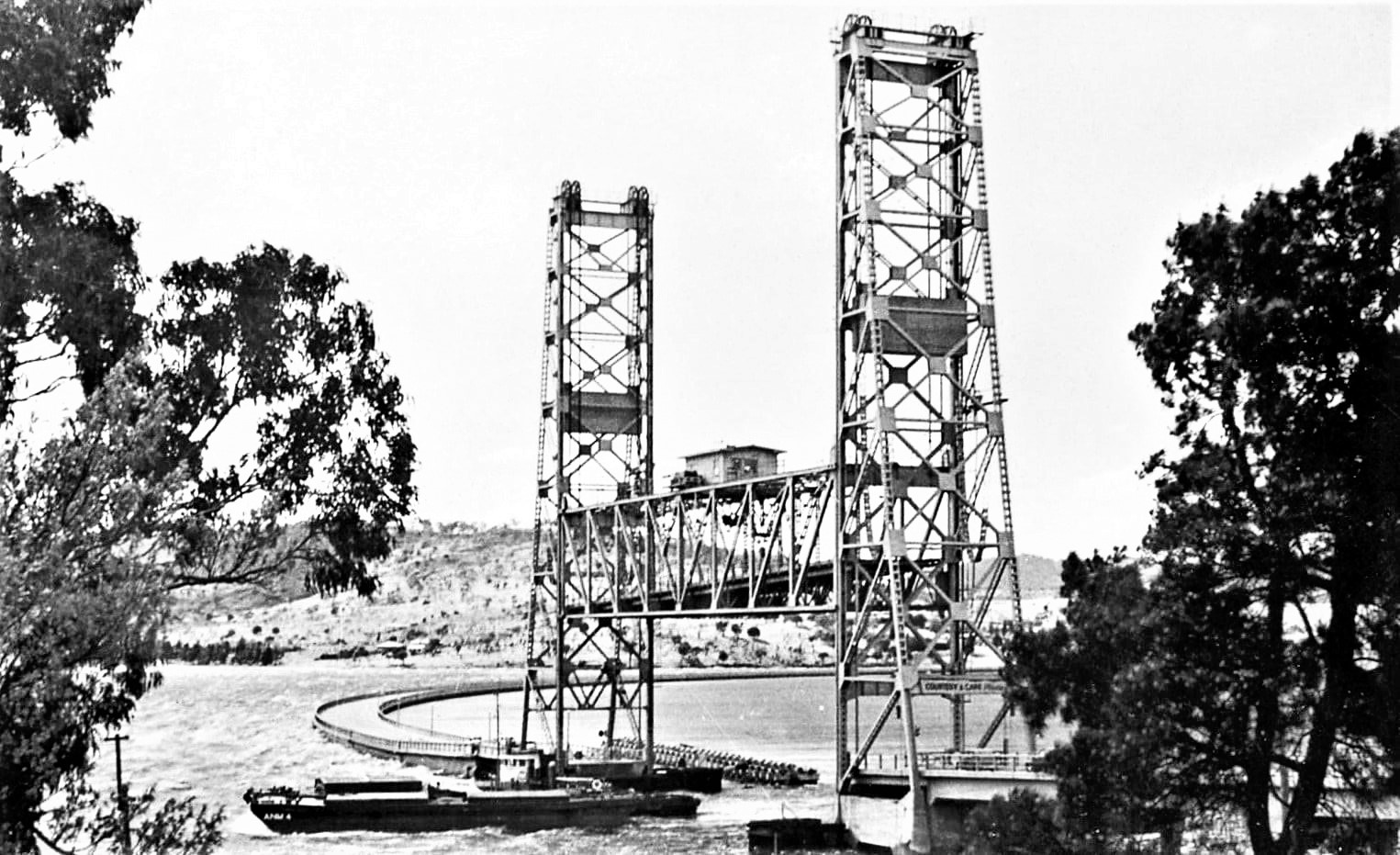
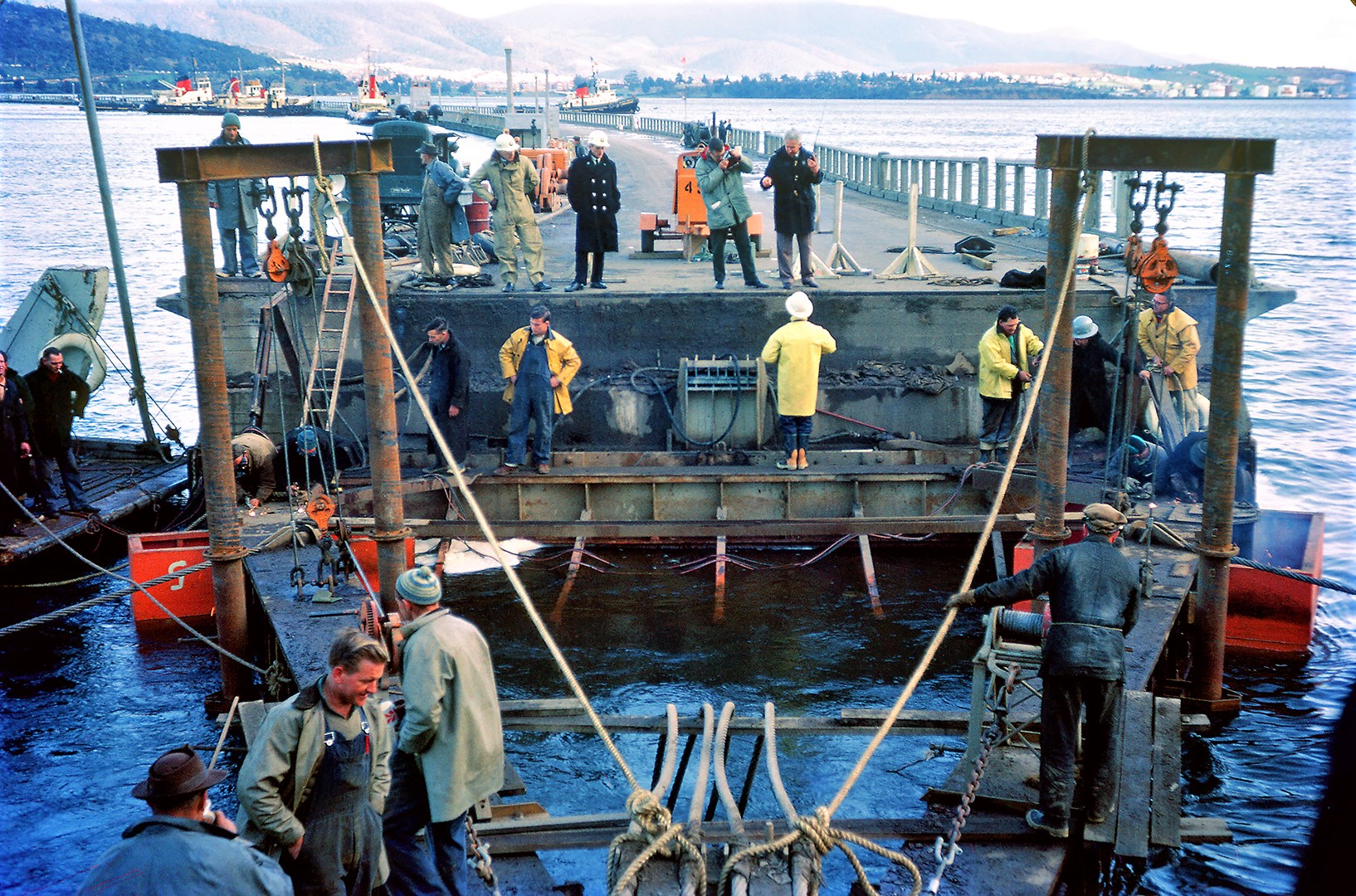
Bibliography
- Hobart Floating Bridge (Engineers Australia).
- Hobart’s Floating Bridge (Our Tasmania).
- Hobart’s historic floating bridge takes its place in history (Mercury).
- Hobart’s Floating Bridge Opened for Traffic (Kalgoorlie Miner).
- Hobart’s Floating Bridge in Danger of Sinking (Barrier Miner).
- Hobart’s £300,000 Floating Bridge (News).
- Tasman Bridge Construction (1965) (Libraries Tasmania).
- ABC News Tasmania – Hobart’s Floating Bridge [5.5.15] (EyewitnessTV).

